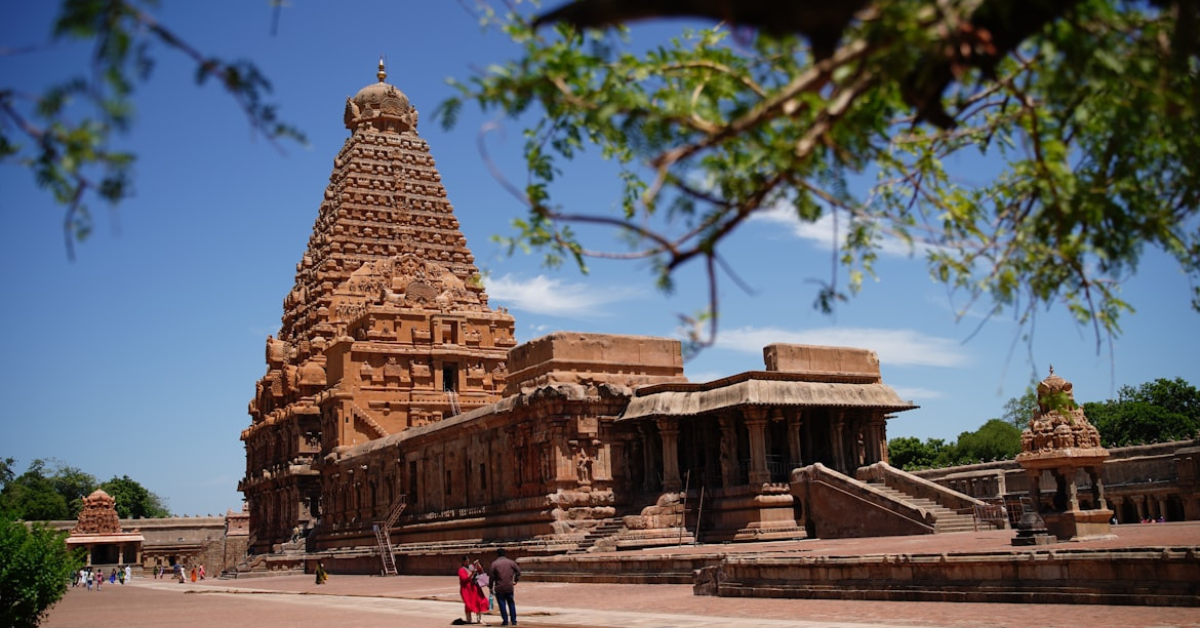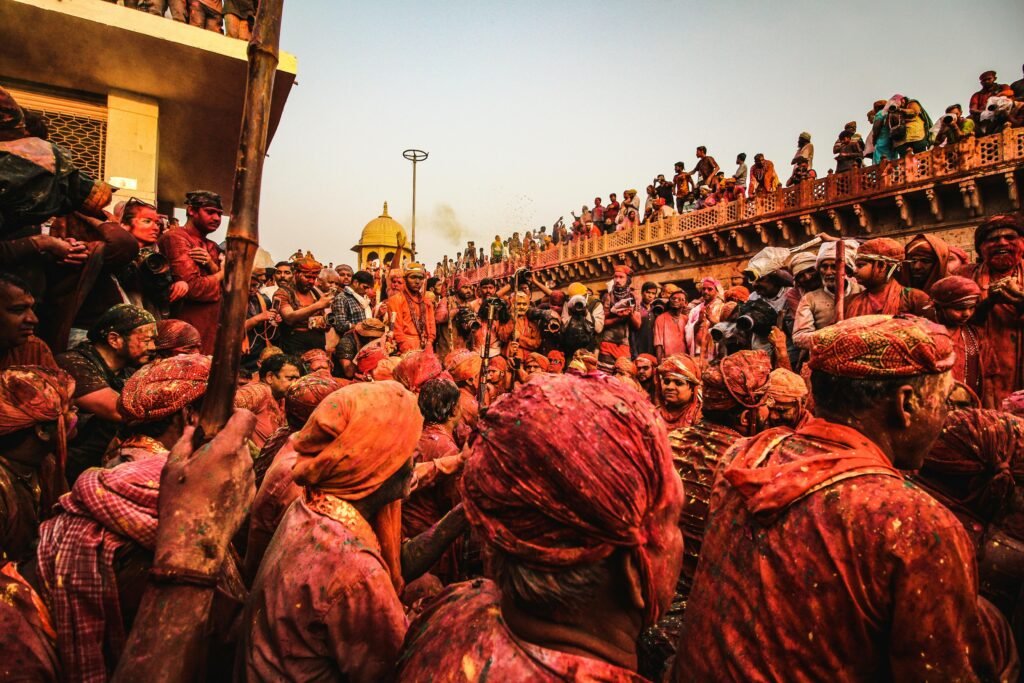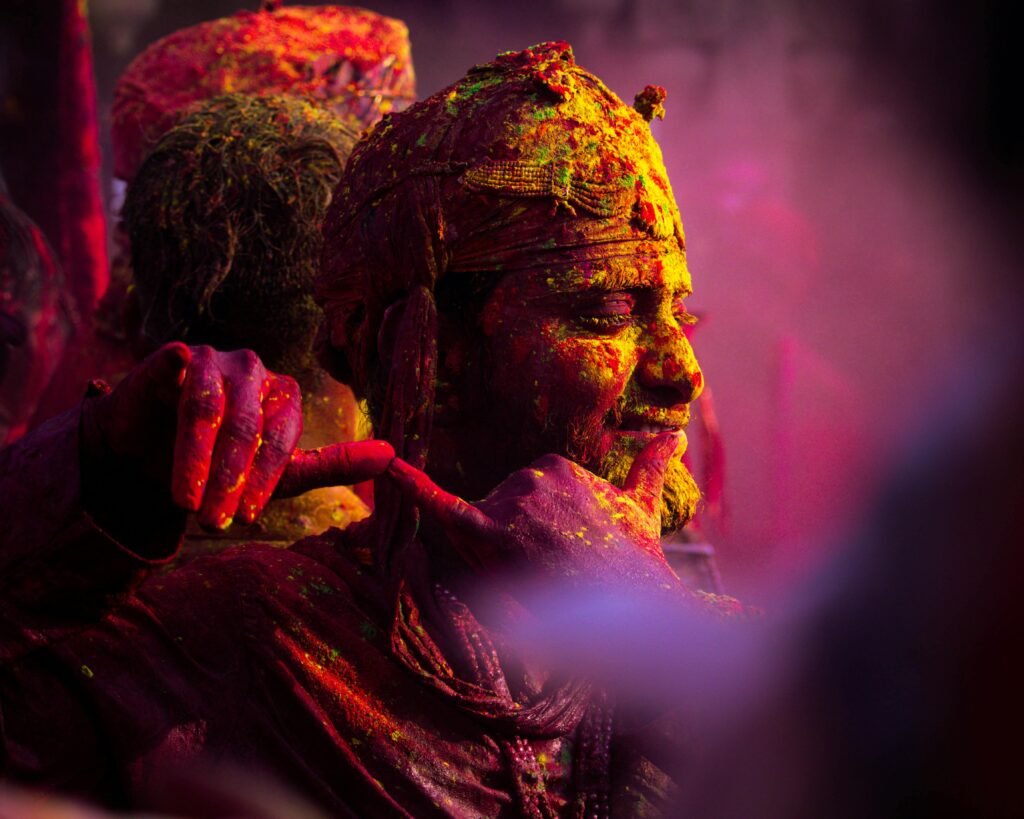
Introduction : The Meeting of Ancient Tradition and Modern Technology
For centuries, temples have served as sacred spaces for worship, reflection, and community gatherings. From the majestic Brihadeeswarar Temple in Tamil Nadu to the revered Kashi Vishwanath in Varanasi, these spiritual hubs have preserved rich traditions and provided solace to countless devotees. People visited these temples to seek blessings, participate in rituals, and experience a divine connection. Today, with temples adapting to the digital world, these sacred spaces are embracing technology to ensure that devotion remains accessible, blending ancient practices with modern convenience.
However, the digital revolution is transforming how we experience spirituality. As technology reshapes various industries, religious institutions are adapting to keep pace. Temples are no exception. The COVID-19 pandemic highlighted the importance of digital platforms, prompting many temples to adopt livestreaming, virtual tours, and online donations. ISKCON temples, for example, began offering global online satsangs, allowing devotees worldwide to participate in spiritual activities from their homes.
In this fast-paced world, adaptation is essential for keeping traditions alive. Temples are now blending technology with age-old rituals to stay accessible and relevant. Whether through digital pujas or virtual darshans, temples adapting to the digital world ensure that spirituality remains within everyone’s reach, regardless of time or location.
Virtual Temple Tours and Digital Pilgrimages
Imagine exploring the sacred corridors of Kashi Vishwanath or witnessing the grandeur of Jagannath Puri without leaving home. Thanks to 360° virtual tours, devotees can now experience these divine spaces with just a click. Temples like Tirupati Balaji and Shirdi Sai Baba offer immersive digital experiences, allowing devotees to feel the spiritual aura remotely.
For a more engaging experience, Augmented Reality (AR) and Virtual Reality (VR) take digital pilgrimages to the next level. With a VR headset, you can participate in the Ganga Aarti in Varanasi or walk alongside devotees during the Rath Yatra. These innovations bring sacred traditions alive, making spiritual journeys accessible to everyone.
These digital adaptations are a blessing for elderly, disabled, and geographically distant devotees who may find physical visits challenging. During the pandemic, when physical access to temples was restricted, virtual pilgrimages allowed millions to stay spiritually connected. Temples adapting to the digital world ensure that devotees, regardless of distance or health, can experience divine grace. These advancements make it possible for anyone to feel the presence of the divine, fostering spiritual growth even from afar.
Online Worship Services and Livestreaming

In today’s digital world, many temples are bringing rituals and ceremonies directly to your home. Through livestreaming, devotees can now witness Maha Aartis at Siddhivinayak or attend the Bhagavad Gita discourses at ISKCON from anywhere. Platforms like YouTube and Facebook have made it easy for temples to broadcast daily pujas and special festivals.
To enhance engagement, some temples offer interactive prayer sessions where devotees can chant mantras and submit prayers in real time. During Navratri 2020, ISKCON organized live bhajan sessions where devotees joined virtually to sing kirtans together. This creates a vibrant spiritual atmosphere, allowing you to feel connected even from afar.
Digital platforms are also helping build strong spiritual communities. WhatsApp groups and Zoom satsangs allow devotees to discuss scriptures, share experiences, and stay connected with temple activities. Temples adapting to the digital world are fostering a sense of belonging, ensuring that devotees remain spiritually engaged. These online services bridge the gap between tradition and technology, allowing you to stay connected with your faith no matter where you are.
Digital Donation Systems and Financial Transparency
Temples are now making it easier for devotees to offer contributions through QR codes and contactless donations. Whether you’re visiting Siddhivinayak Temple or attending a virtual darshan, you can scan a QR code and instantly make an offering. These digital payment options ensure convenience while maintaining the tradition of giving.
Many temples are also adopting subscription-based donation models. Devotees can opt for monthly or yearly contributions, ensuring consistent temple support. Platforms like Temple Connect enable regular contributions and keep devotees informed about temple activities
Blockchain and cryptocurrency applications are bringing a new level of security and transparency to temple donations. Blockchain technology records every transaction, ensuring that funds are used appropriately. This creates trust and accountability among devotees.
To enhance financial transparency, many temples now provide detailed reports on fund utilization through their websites. Temples adapting to the digital world are ensuring that devotees’ contributions are used wisely, promoting a sense of trust and involvement. These innovations make supporting temples easier, safer, and more transparent, allowing you to participate in preserving sacred traditions effortlessly.
Temple Apps and Custom Digital Platforms
Temples are embracing technology by offering mobile applications that guide devotees through daily prayers and rituals. Apps like ISKCON’s Hare Krishna App provide morning chants, aarti timings, and festival updates, making it easy for you to stay connected. These apps ensure that spiritual routines become part of your everyday life.
For special ceremonies, temples now offer digital scheduling to book pujas, havans, and abhishekams online. You can select a time that suits you and even participate virtually. During Ganesh Chaturthi, thousands of devotees booked online pujas at Lalbaugcha Raja, ensuring they didn’t miss out on the festivities.
Many temple apps include sacred text libraries and audio guides, allowing you to explore ancient scriptures at your own pace. Whether it’s the Bhagavad Gita or Ramayana, these digital platforms preserve and share spiritual knowledge.
Personalized experiences are also possible through custom digital platforms. You can receive tailored spiritual guidance, horoscope updates, and personalized mantras. Temples adapting to the digital world ensure that your spiritual journey becomes more enriching, offering convenience while preserving age-old traditions. These innovations make it easier to stay devoted, regardless of where you are.
Social Media Presence and Community Engagement
Temples are now reaching global audiences by leveraging social media platforms like Facebook, Instagram, and YouTube. ISKCON temples regularly post updates, bhajan sessions, and festival highlights, keeping devotees informed and engaged. These platforms allow you to stay connected with temple activities, no matter where you are.
To maintain reverence, temples follow content strategies that respect sacred traditions. They share devotional quotes, mythological stories, and glimpses of daily rituals while maintaining a spiritual tone. During Ram Navami, many temples shared Lord Ram’s teachings and organized virtual celebrations that attracted millions of viewers.
Global communities are forming around local temples, bringing together devotees who share similar faiths and traditions. For instance, the Meenakshi Temple in Madurai connects with Tamil communities worldwide, fostering a sense of belonging. These online communities allow devotees to discuss spiritual topics, ask questions, and deepen their understanding.
Balancing reverence with engagement is key, and temples adapting to the digital world are achieving this beautifully. They create a sacred online environment while keeping interactions meaningful. By blending tradition with modern communication, temples are nurturing a global spiritual family, ensuring that devotion transcends geographical boundaries.
Digital Preservation of Ancient Practices and Artifacts

Temples are using 3D scanning technology to preserve intricate architecture and ancient artifacts. The Brihadeeswarar Temple in Thanjavur has been digitally mapped to ensure that its grandeur is recorded for future generations. These detailed 3D scans capture even the smallest carvings, keeping the temple’s heritage intact.
Digital archives are safeguarding oral traditions and ceremonies that have been passed down for centuries. The Chidambaram Nataraja Temple has digitized its traditional dance and ritual practices, ensuring that these sacred customs are never lost. These archives allow you to experience ancient practices from anywhere in the world.
AI technology is helping translate and preserve ancient texts such as the Vedas and Upanishads. By converting these texts into multiple languages, AI ensures that spiritual knowledge remains accessible to future generations. Imagine reading the Bhagavad Gita in your preferred language with accurate interpretations.
By embracing technology, temples adapting to the digital world are ensuring that cultural continuity is maintained. These innovations protect India’s rich spiritual heritage while making it available for seekers across the globe. This digital shift ensures that sacred traditions continue to inspire and guide generations to come.
Challenges and Controversies
While temples adapting to the digital world offer many benefits, the journey isn’t without challenges. Some traditionalists resist technological changes, fearing that digitizing rituals may dilute their sacred essence. For instance, concerns arose when Tirupati Balaji Temple introduced online darshan, with devotees questioning whether virtual visits could match the spiritual impact of physical presence.
Maintaining authenticity in digital spaces is another challenge. Temples need to ensure that online rituals and ceremonies uphold the sanctity of ancient traditions. Without proper oversight, digital platforms may risk distorting the essence of rituals.
A digital divide exists among different temple communities, where technologically advanced temples easily adopt digital solutions, while smaller, rural temples struggle with resources and access. This creates an imbalance in how devotees connect with their faith.
Privacy concerns and data protection also arise with online donations and virtual platforms. Devotees worry about the safety of their financial and personal information. Ensuring secure platforms is essential for building trust.
Despite these challenges, temples adapting to the digital world are finding ways to balance innovation with tradition, ensuring that faith remains accessible and secure for everyone.
Future Trends: Where Technology Meets Spirituality

The future looks exciting as temples adapting to the digital world explore emerging technologies to enhance spiritual experiences. Artificial Intelligence (AI) could offer personalized spiritual guidance, suggesting mantras or scriptures based on your preferences. Imagine an AI assistant reminding you of auspicious timings or helping you chant the Hanuman Chalisa correctly.
In the next decade, Augmented Reality (AR) and Virtual Reality (VR) may allow you to participate in immersive rituals from your home. You could virtually join the Kumbh Mela or witness the Abhishekam at Kedarnath with lifelike clarity. Such innovations will bridge the gap between physical presence and digital convenience.
Holographic technology may even recreate divine idols and sacred spaces, offering a near-real experience for devotees who cannot visit temples. Blockchain could further enhance transparency by ensuring secure and traceable donations.
As these innovations unfold, the challenge will be to maintain a balance between physical presence and digital convenience. While digital access offers flexibility, the essence of standing before the deity in a sacred space remains unmatched. Temples adapting to the digital world will continue to find harmony between these realms, ensuring that devotion thrives in both physical and virtual spaces.
Conclusion: Honoring Tradition While Embracing Innovation
Temples adapting to the digital world have shown that tradition and technology can coexist beautifully. Tirupati Balaji Temple’s seamless online darshan and ISKCON’s interactive digital platforms prove that innovation can enhance devotion. These success stories highlight how intentional technological adoption can preserve sacred practices while making them accessible to a global audience.
As temples continue to embrace digital solutions, the focus should remain on maintaining the sanctity of ancient traditions. By thoughtfully integrating technology, temples ensure that spirituality remains vibrant and inclusive.
We would love to hear your thoughts! Have you experienced a virtual darshan or used a temple app like DivyaKripa? Share your experiences in the comments and be part of this evolving spiritual journey. Your insights will help others appreciate how temples adapting to the digital world are preserving faith while embracing modern convenience.


